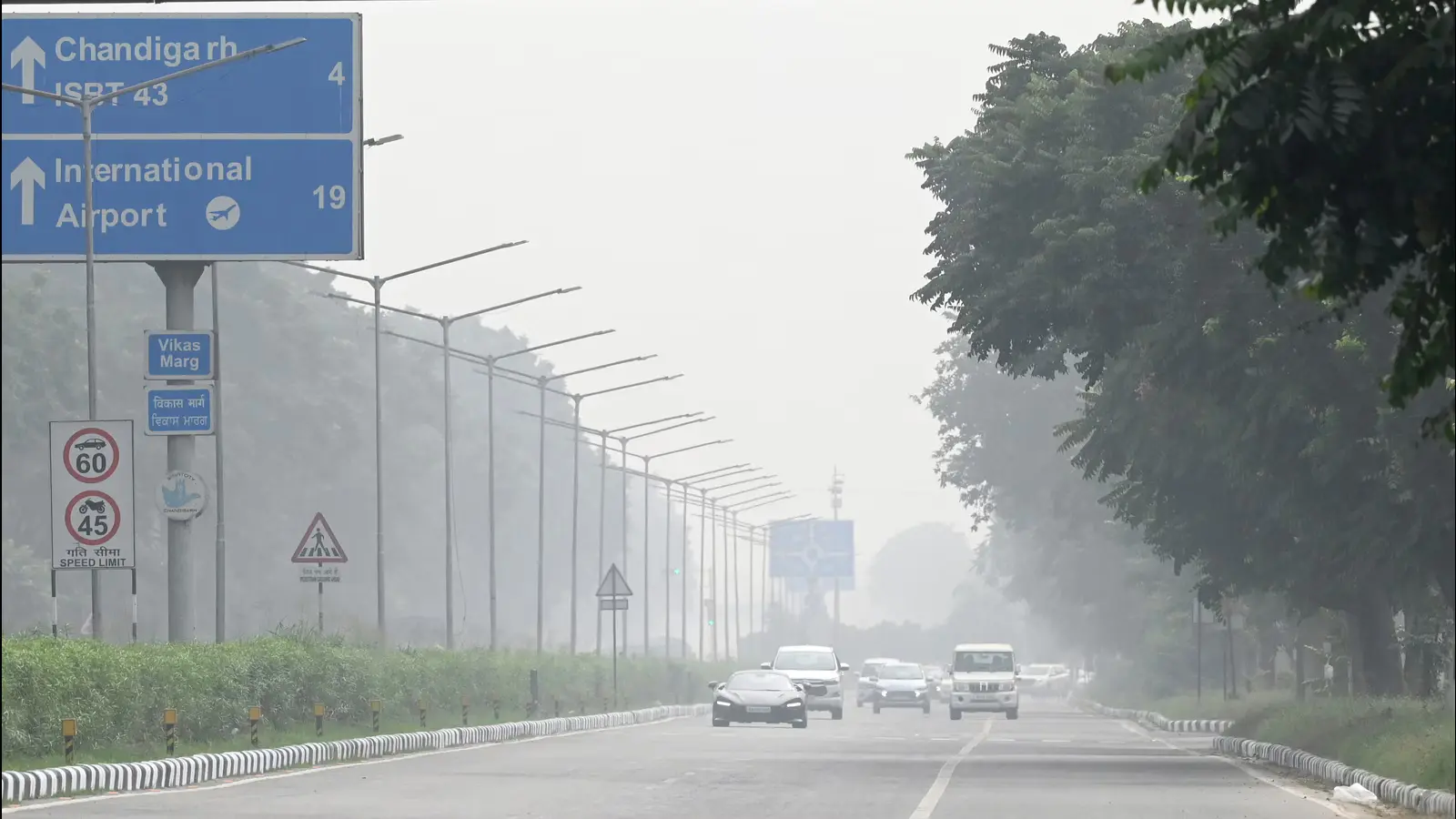On Sunday, 10th November, Chandigarh’s air quality had turned worse as its Air Quality Index (AQI) reached a hazardous level of 341. This has marked a dangerous decline in air quality of the city and has surpassed even Delhi’s AQI of 334. It had become equivalent to inhaling the smoke of 12.5 cigarettes. The primary cause for this high AQI is the ongoing stubble burning in Punjab.
The air quality in multiple regions of Chandigarh and surrounding areas has shown severe levels of pollution and has affected the daily life by causing respiratory issues to the residents of the city.
AQI of Chandigarh and Punjab areas on Sunday:
• Chandigarh: AQI 341 (Sector-53, New Chandigarh, PU, Sector-22)
• Mandi Gobindgarh: AQI 270
• Jalandhar: AQI 207
• Amritsar: AQI 202
• Ludhiana: AQI 202
• Patiala & Khanna: AQI 199
AQI of Chandigarh and Punjab areas on Monday:
• Chandigarh: AQI 229 (Sector-53, New Chandigarh, PU, Sector-22)
• Mandi Gobindgarh: AQI 177
• Jalandhar: AQI 168
• Amritsar: AQI 239
• Ludhiana: AQI 169
This increasing pollution levels have become hazardous to health of the residents, especially for those who have pre-existing respiratory conditions. People diagnosed with asthma are at significant risk of health complications. Authorities have also warned citizens to avoid outdoor activities.
The Chandigarh Pollution Control Committee is urging the Municipal Corporation to take steps like water spraying and dust suppression in order to reduce pollution levels. The weather department has also issued an orange alert due to dense fog that has worsened the visibility.
Breathing in air with such high AQI can lead to respiratory issues and eye irritation. People diagnosed with asthma or heart diseases are at greater risk. Residents are suggested to limit their outdoor exposure and wear protective masks. They are recommended to use air purifiers inside their homes and keep windows shut in order to keep polluted air outside.
